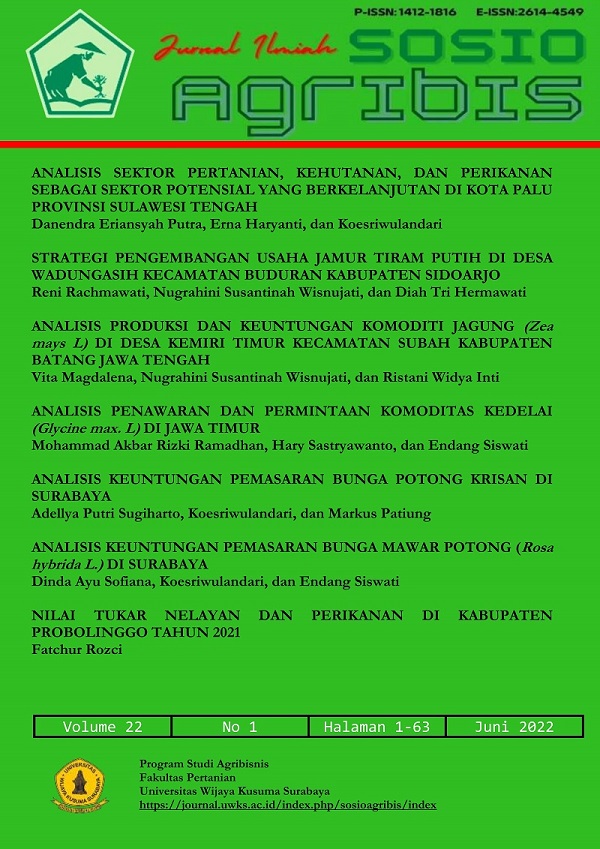Analisis Produksi dan Keuntungan Komoditi Jagung (Zea mays L) di Desa Kemiri Timur Kecamatan Subah Kabupaten Batang Provinsi Jawa Tengah
DOI:
https://doi.org/10.30742/jisa22120221995Abstract
Corn is the second most important food commodity after rice. One of the mainstay commodities in the agricultural sector is corn, because corn is one of the staple foods in Indonesia which has an important position after rice. The objectives of this study are 1. to analyze the factors that influence corn production in Kemiri Timur Village, District, 2. To analyze the income of corn farmers in Kemiri Village, Subah District. The research method used is the Random Sampling method. Respondents in this study were 30 owner farmers. The data collection method used primary data and secondary data. The data analysis method used multiple linear regression analysis. Based on the results of multiple linear regression, the maize production mode in Subah District is as follows: Y = -2.237 – 0.751X2 + (-0,220)X3 + 0.194X4 + (-0.023)X5 + e. Based on the F-statistic of 133,218 with a significance of 0.000%, it means that simultaneously all production activities carried out including corn fields, labor, seeds and fertilizers have a significant effect on corn production in Subah District, Batang Regency. Partially, production activities that have a significant effect on income are land area and labor.
Keywords : Corn Plants, Multiple Linear Regression Analysis, Profit AnalysisDownloads
Published
Issue
Section
License
- The author retains copyright and grants the journal the right of first publication with the work being simultaneously licensed under the Creative Commons Attribution License which allows others to share the work with acknowledgment of the work's authorship and initial publication in this journal.
- Authors may make additional separate contractual arrangements for the non-exclusive distribution of the published journal version of the work (for example, posting it to an institutional repository or publishing it in a book), with acknowledgment of its initial publication in this journal.
- Authors are permitted and encouraged to post their work online (for example, in institutional repositories or on their websites) before and during the submission process, as it can result in a productive exchange, as well as earlier and larger citations of published work (See The Influence Open Access).

